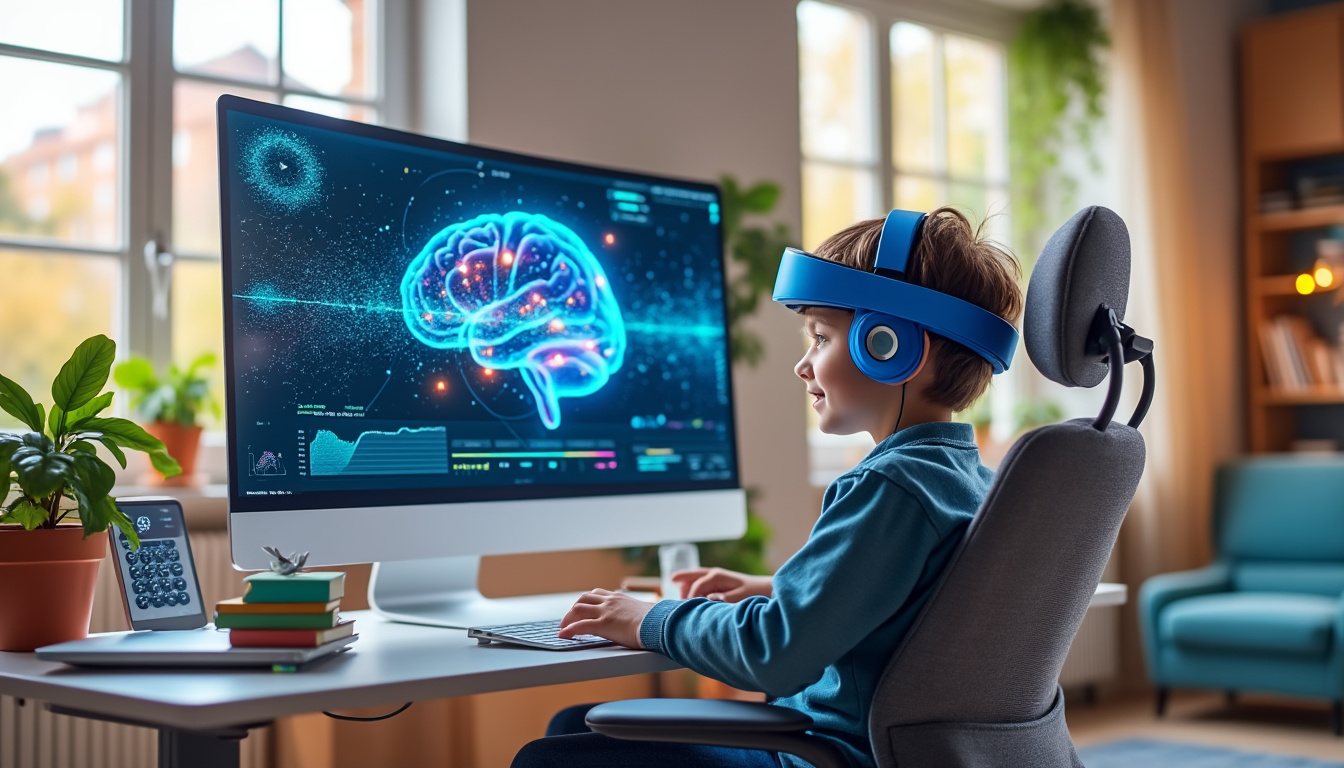In a world where technological advances are redefining education, one innovation stands out: a digital device that allows children with ADHD to receive instant feedback on their brain activity. This tool, which meets the growing need for support for young people with cognitive difficulties, promises a pedagogical revolution by offering tailor-made solutions adapted to their specific needs. Through an intuitive interface, children can visualize in real time the impact of their efforts on their concentration, while receiving encouragement tailored to their progress. This article explores in depth the implications of this innovative technology and its potential to transform the world of ADHD.
Understanding ADHD and its Cognitive Challenges
Attention Deficit Hyperactivity Disorder (ADHD) is a neurodevelopmental disorder that affects a significant number of children worldwide. In France, approximately 5% of young people suffer from this syndrome, which manifests itself through difficulties concentrating, organizing themselves, and managing their impulses. The challenges associated with this disorder are often compounded in a school setting, where academic and behavioral demands require sustained attention.
Classic Symptoms of ADHD
Children diagnosed with ADHD typically exhibit several symptoms:
- Inattention: Difficulty following instructions, tendency to lose items important to their tasks.
- Hyperactivity: Restless behavior, difficulty staying seated during class.
- Impulsivity: Acting without thinking, which can lead to risky behavior or conflict with peers.
These symptoms can seriously hamper their academic performance. Children with ADHD may struggle to understand and follow instructions given by their teachers, which can lead to frustration and stress. Furthermore, the lack of positive feedback on their efforts can affect their self-esteem and motivation.
Brain Mechanisms of ADHD
On a neurological level, several studies have shown that children with ADHD exhibit hypoactivation in certain brain regions, particularly the prefrontal cortex. This region is crucial for functions such as decision-making, planning, and impulse control. By strengthening this brain activity through targeted interventions, it is possible to improve the cognitive performance of affected young people. Digital Technology for Children with ADHD Technological advances now make it possible to overcome some of the limitations associated with ADHD. With this in mind, neurofeedback tools are coming into play, providing real-time feedback on children’s brain activity. Among these devices, some stand out for their simplicity and effectiveness, such as MindMonitor, Cerebrum, and FocusEnfant technologies.
How neurofeedback devices work
The basic principle is to provide users, in this case children, with information about their brain activity while they perform cognitive tasks. This is done through a headset equipped with sensors that record the brain’s electrical activity. This activity is then converted into visual and audio signals that notify the child of their performance. When a child successfully focuses their attention, they receive positive feedback through visual rewards, such as brainwave images. on a screen or pleasant sounds. This reinforcement helps condition the child to achieve higher levels of attention. For example, the technology used by SensoKids offers a playful interface that helps children explore and improve their concentration. Benefits for LearningThe use of neurofeedback technology has several advantages, including: Personalization: Interventions are tailored to each child’s individual needs, allowing for greater effectiveness. Motivation:Instant and positive feedback encourages children to persist in their efforts.
Autonomy:
Children learn to regulate their attention independently, reducing their dependence on external interventions.
Promising Study Results Research on the effectiveness of these tools is particularly encouraging. For example, a study published in the journal iScience showed that after 12 weeks of neurofeedback interventions, children significantly improved their performance in terms of memorization and attention. These results reinforce the notion that, although ADHD presents significant challenges, tools like NeuroTrack can provide valuable support. Case Study: The NeuroKids Program An innovative program, called NeuroKids, was implemented to explore the impact of neurofeedback practices on a group of 21 children. Through personalized monitoring, participants wore a headset that measured their brain activity and provided real-time feedback during memory sessions. At the end of the program, the following were observed: Measurement
Before Program
After Program
- Memory Performance 45%
- 75% ADHD Symptoms (Questionnaire)
- 20/40 12/40
The results show an improvement not only in the ability to recall information but also in the overall reduction of ADHD symptoms. This proves that it is possible to positively impact the cognitive abilities of children with ADHD.
Future Prospects in Research and Innovation As research continues to explore the potential of neurofeedback, innovations such as affordable, wearable devices could soon allow children to access the benefits of monitoring their brain activity at home. Projects such as CognitionAssist, which aims to create an adaptive learning environment, show undeniable promise for ADHD management. The Importance of Personalization and Accessibility
One of the major challenges is making these technologies accessible to all children, regardless of their geographic location or financial means. Researchers are working to develop low-cost tools that could be used at home, reducing the need for frequent visits to specialists. This could make a significant difference for many young people struggling with ADHD. A promising future with technological advances
Neurofeedback technology, combined with other cognitive practices, could transform the landscape of ADHD diagnosis and intervention. It could also open the door to earlier intervention, which is crucial for improving the neurological development of affected children. Devices like MindMonitor are playing a fundamental role in changing this paradigm by integrating technology into learning methods, thus offering a brighter future for children with ADHD.




